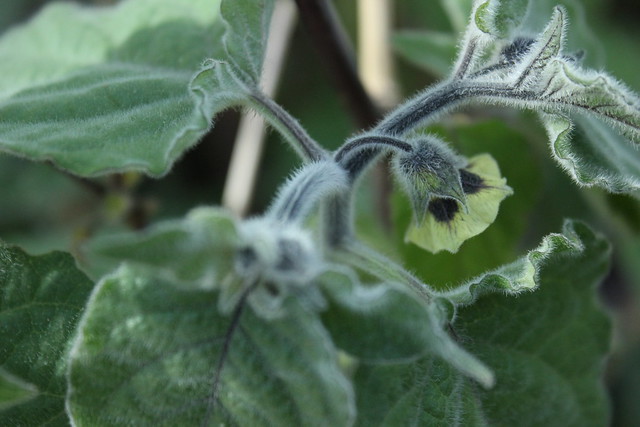 |
| ~ New Zealand Spinach ~ |
Just three short weeks ago, I wrote that the spinach that I'd sown was doing really well along with some chard. I should have kept quiet because, of course, it has bolted. So, one cut of leaves and then flower spikes. Not really what I had in mind.
Spinach really doesn't like a lot of heat. Traditionally it's a leaf crop that can be sown in early spring and again in the autumn for a winter crop. Depending on the variety and mildness of your winters, you can protect your autumn crop with cloches and harvest right through the colder months.
That doesn't really sort me out for now though, does it? There are alternatives, of course. Perennial spinach, mountain spinach (Atriplex rubra aka red orach) and the chenopodiums (Good King Henry and Magentaspreen) but, in my book, nothing beats a good old plate of real spinach - smooshed into a smoothie, wilted into pasta or dhal, stirred into a stew, tossed and dressed in a salad. I eat a lot of spinach.
So what's a gardener to do? It looks like summer has finally arrived (for this week, at least) with heat and sun aplenty so the first thing is to look for a shady spot in the garden - or create one with cloches or plants. I'm not growing sweet corn this year which would provide shade for spinach but I am growing my own beads in the form of Job's Tears (Croix lachryma-jobi), a plant with similar sword like leaves - exciting, huh? I'll tell more about that project later :o) Spinach seeds can be sown in between those plants and the tall broad bean plants from my second spring sowing.
The next box to check is the soil - as always! Spinach likes a good 30cm (12 inches) of fine nutrient rich soil that retains moisture. Regular watering (twice a day, roots only) is also key for summer spinach - don't let your spinach dry out, which is probably what I did when temperatures soared. My bad. So make sure your soil is lump free and add nitrogen with blood, fish and bone or chicken manure pellets. The spot I've chosen won't need extra nitrogen as I'm cutting down the winter sown broad beans to make a space, leaving behind the roots with their nitrogen fixing nodules. I might also dig in a spade or two of Dalefoot's latest addition to their excellent range: peat free compost for Vegetables and Salads. It's a wool and bracken compost that I've been trialling and is lovely to use and, so far, has given good results.
And last of all: seeds. For this, I turned to Chiltern Seeds. Why? Because their brochures and range are excellent plus they're located near to where my niece lives ... which shouldn't matter, I know, but I like local and family. Their beautiful website provided several options so I rang them and asked for help in choosing seeds to sow now. They've kindly sent me two options: 'Giant Winter' (a true spinach with large leaves for winter and spring use) and 'New Zealand Spinach' which is a spinach lookalike - Latin name Tetragonia tetragonioides. Rather excitingly, it's a low growing spreading plant that originates from the stony beaches of the Antipodes and will tolerate some drought, although the taste is best when grown in moist soil. According to the PFAF database, it cannot be grown in the shade and is an evergreen perennial. Chilterns sell the seed as a half-hardy annual so this is going to be a plant worth watching. An edible beach plant - what's not to love!
Spinach lovers, I'll let you know how my trial goes. Has anyone else had success with summer spinach? And have any Antipodean readers grown New Zealand spinach - I'd love to know!
PS. I've just been chatting to my plot neighbour at the allotments this morning - he always grows New Zealand spinach for his wife who is from NZ and tells me that this year two sowings of this spinach failed to germinate. It hasn't been a problem in previous years so I'm wondering whether the erratic temperatures this year have been to blame - spinach prefers a soil temperature of between 50F to 72F to germinate.




















